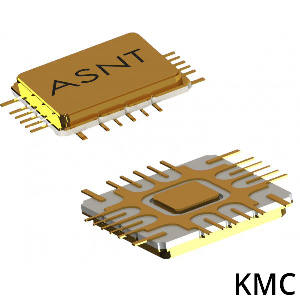Drass and Jeff: putting CMOS output in parallel, nice going.
//I still wonder if clock buffers/distributors could distribute data signals as well... and if their outputs could be wired together.
:---
Now for some boring statistics: Fairchild\Onsemi NC7SV versus TI 74AUC.
Propagation delays of different logic chips, load = 30pF parallel 500 Ohms to GND, 25°C.
Format is "min. / typ. / max." in ns.
When typ. was not specified, I assumed typ. = (min. + max.) /2 and added a question mark.
//1 gate per chip
NC7SV08:
2.3V..2.7V: 0.8 / 1.2 / 2.6,
2.7V..3.6V: 0.7 / 1.0 / 2.3
NC7SV14:
2.3V..2.7V: 0.8 / 1.8 / 3.7,
2.7V..3.6V: 0.7 / 1.5 / 3.3
NC7SV86:
2.3V..2.7V: 0.8 / 1.2 / 3.6,
2.7V..3.6V: 0.7 / 1.0 / 3.3
//1 gate per chip
74AUC1G08: 2.5V: 0.5 / 1.25? / 2.0
74AUC1G14: 2.5V: 0.5 / 1.5? / 2.5
74AUC1G86: 2.5V: 0.7 / 1.35? / 2.0
//2 gates per chip
74AUC2G08: 2.5V: 1.0 / 1.3? / 1.6
74AUC2G14: not available.
74AUC2G86: 2.5V: 0.7 / 1.35? / 2.0
//4 gates per chip
74AUC08: 2.5V: 0.5 / 1.15? / 1.8
74AUC14: 2.5V: 0.7 / 1.7? / 2.7
74ACU86: not available.
;---
Sorted for speed, based on typ. propagation delay:
NC7SV08@3.3V:1.0 > 74AUC08:1.15? > NC7SV08@2.5V:1.2 > 74AUC1G08:1.25? > 74AUC2G08:1.3?
NC7SV14@3.3V:1.5 = 74AUC1G14:1.5? > 74AUC14:1.7? > NC7SV14@2.5V:1.8 //74AUC2G14 not available.
NC7SV86@3.3V:1.0 > NC7SV86@2.5V:1.2 > 74AUC1G86:1.35? = 74AUC2G86:1.35? //74AUC86 not available.
And the winner for Schmitt trigger inverters, AND and XOR is +3.3V powered NC7SV.;---
Edit:
Requested by Jeff down in the thread:
NC7SV04@3.3V: 0.7 / 1.5 / 2.3
NC7SV04@2.5: 0.8 / 1.8 / 2.7
74AUC1G04: 0.5 / 1.2? / 1.9
74AUC2G04: 0.7 / 1.1? / 1.5
74AUC04: 0.5 / 1.25? / 2.0
NC7SV240: not available.
74AUC1G240: 0.8 / 1.25? / 1.7
74AUC2G240: 0.6 / 1.15? / 1.7
74AUC240: 0.9 / 1.25? / 1.6
74AUCH240: 0.9 / 1.25? / 1.6
The winner for inverters is +2.5V powered 74AUC2G04.Attachment:
 cmos_propagationdelay.png [ 48.22 KiB | Viewed 2379 times ]
cmos_propagationdelay.png [ 48.22 KiB | Viewed 2379 times ]
;---
Just for the fun of it:
//-5.2V NECL from the 80s (obsolete):
//MC10H113 (4* XOR): 0.40 / 1.05? / 1.70
//MC10H104 (4* AND): 0.45 / 1.10? / 1.75
//fully differential 3.3V..5V PECL with chips from 2020:
//MC100EP05 (1* AND): 170ps / 220ps / 270ps
//MC100EP08 (1* XOR): 180ps / 250ps / 300ps
//CML and "don't look for the price": AnalogDevices.
//HMC726 (1*AND): 95ps typ. //13 Gbps
//HMC725 (1*XOR): 105ps typ. //13 Gbps
//CML and IDKFA: Adsantec, the computer probably would be as expensive as a Cray-1 then.
//ASNT5160 (1* AND): 50 Gbps, 25GHz
//ASNT5143 (1* XOR): 32 GHz
Attachment:
 adsantec_package.png [ 78.3 KiB | Viewed 2455 times ]
adsantec_package.png [ 78.3 KiB | Viewed 2455 times ]







